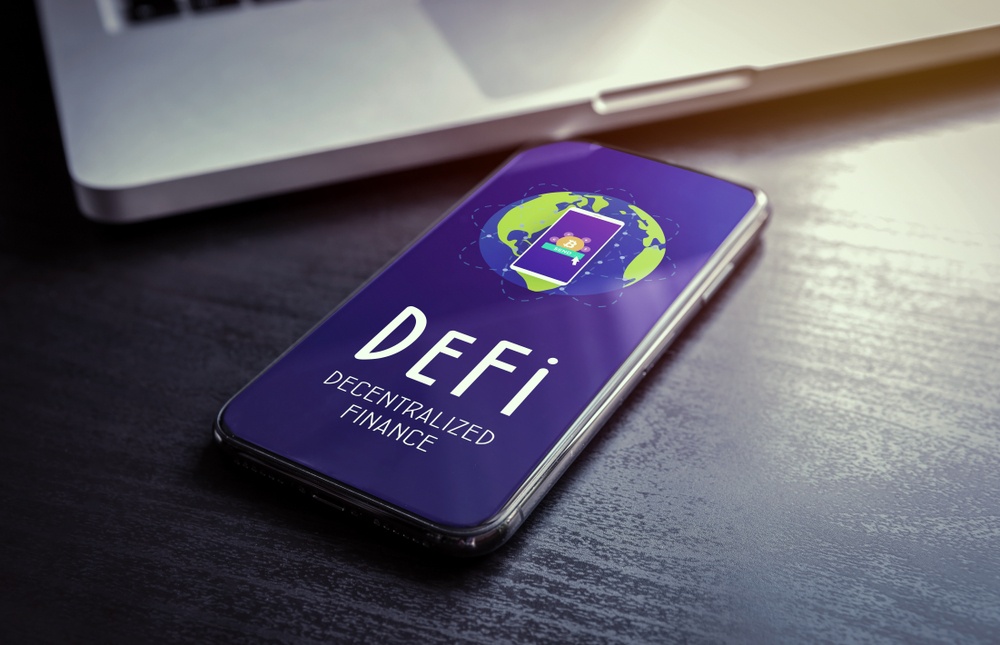Is Defi The New Poster Boy of Crypto?

For a while, experts have predicted that the next phase of crypto adoption depends on the growth pattern of the DeFi ecosystem. And from what we have witnessed in recent weeks, there is an atom of truth in this assertion. The buzz surrounding the growth of the DeFi sector in the last few months has taken center stage, and it is likely to maintain such levels of hype for a while. Therefore, it has become necessary to explore the implications of this development and how it compares to the market performances of crypto reserve assets.
In this article, I will explore thoughts of experts on the following topic: Is DeFi the new poster boy for crypto, or is it a bubble?
Bitcoin Has Shed Its Volatility

Before the start of the year, a majority of analysts predicted that the just executed bitcoin halving would inject momentum into the market, and it will subsequently culminate in a bull run. Although the pre-halving price performance of bitcoin did showcase elements of a rally, the post-halving market movement has been far from convincing. Instead of exhibiting wild fluctuations as expected, the price of bitcoin had since settled between the $8,500 and $10,000 range.
These anticlimactic post-halving effects have shifted the attention from Bitcoin to other sectors of the crypto market, resulting in further shedding of the realized volatility of the crypto asset. A recent report revealed that the realized volatility of bitcoin had sunk to levels last recorded in 2017, with even Tesla stock outpacing the traditionally volatile digital asset in terms of fluctuations. Following Bitcoin’s unexciting price performance in the last few months, traders and analysts have begun to explore underlying factors causing this stability.
Some believe that the presence of high-frequency trading (HFT) might have induced the involatile state of the bitcoin market. According to Paolo Ardoino, CTO of Bitfinex, the increase in High-frequency trades across exchanges has tamed the volatility of Bitcoin. He told Cointelegraph:

Paolo Ardoino, CTO of Bitfinex
“In crypto, we are back to the old days of HFT before it became the zero-sum game that it has become today. In crypto HFT firms can make a lot of money deploying relatively straightforward plays, such as cross-exchange arbitrage and exploiting the spread between one exchange and another.”
Ardoino suggested that the influx of institutional investors is integral to current market conditions, considering how these entities predominantly prefer to engage in High-frequency trades. To back up this narrative, Bitfinex revealed that HFT firms account for about 80% to 90% of the volume of trades executed on its platform. The exchange believes that the influx of high-frequency trading strategy translates to an increase in market maturity. While buttressing this point, Ardoino explained that there is “generally an inverse correlation between liquidity and volatility; i.e., higher liquidity tends to lead to lower price volatility.” He added:
“The increasing presence of HFT firms in crypto seems to have added more liquidity to crypto exchanges. This provides sufficient orders for both sides of the order book and increases market efficiency, contributing to prolonged low volatility price consolidation in Bitcoin.”
DeFi Takes Center Stage

Without any doubt, there is a sense of truism in this sentiment, as the current financial crisis has forced more investors to consider allocating a share of their holdings or investments to cryptocurrency. And if this is the case, it is very much possible that the activities of these investors could cushion the effects of whale movements that usually cause wild price movements. However, there are other factors to consider. There is a correlation between bitcoin and traditional stock markets that could restrict the price pattern of the digital asset. Likewise, there may be a shift in the dynamics of the market, further pushing Bitcoin to the backseat.
According to various metric systems monitoring the crypto market, the bulk of investors’ attention has shifted to the DeFi sector in the last few months. While the performance of bitcoin has failed to catch the eye, altcoins, fueled by the DeFi sector, have continued to soar to new highs. According to data from DeFi Pulse, the value of total asset locked (TVL) on DeFi protocols has doubled since the year began. A large chunk of this growth came in June when the TVL maintained a steady uptick, thanks to an increase in the usage in DeFi platforms.
As expected, the surge in the user base of the DeFi ecosystem has directly induced volatile price movements of DeFi-enabled tokens. Although bitcoin and other crypto reserve assets had become stable to an extent, we saw the exact opposite of this price-performance take root in the DeFi landscape. In just under three months, the value of DeFi tokens has grown by over 800%. In contrast, bitcoin and the broader crypto market recorded around 27% growth within the same time frame. One of the standout performers is COMP, which might have induced the DeFi renaissance. Another is the LEND token that has generated over 1000% growth since January. Other noteworthy assets are Bancor, with around 800% increase in valuation and REN, which posted a 250% uptrend in the last quarter.
The DeFi hype has seen stakeholders and developers scramble for recognition in hopes of capitalizing on the increased demand for decentralized financial tools. The current narrative surrounding the growth potential of the DeFi sector has relegated post- bitcoin halving expectations to the backburner amidst intensified scrutiny of the nascent economy. Already, experts have begun to share their thoughts on the current DeFi hype, especially on the possibility of a bubble economy and the importance of organic growth.
Is DeFi a bubble or not?
At the tail end of June, Waves Association founder, Sasha Ivanov, likened the buzz surrounding the DeFi landscape to the ICO bubble of 2017. In a statement attributed to him, Ivanov noted that DeFi has the potential to transform crypto narratives but also run the risk of attracting the wrong sort of hype. He explained:

Waves Association founder, Sasha Ivanov
“DeFi is the future, but it’s going to be coming through a bubble part of the cycle now, which can harm its long-term development… DeFi products are more sophisticated in nature than simple ICO tokens, which probably will limit the influx of non-qualified investors, but future inevitable volatility and price crashes can severely harm DeFi mass adoption perspectives, which would be very bright otherwise.”
While reiterating this view, Campbell Harvey, a professor of international business at Duke University, noted that he does not see elements of the type of speculative craze that fueled the ICO bubble in today’s DeFi explosion. He explained that whereas the ICO era spurred a bandwagon effect that encouraged FOMO, DeFi, on the other hand, is generating value. Harvey stated:

Campbell Harvey, a professor of international business at Duke University
“DeFi is poised to disrupt traditional borrowing and lending/investing, which is an existing market that is massive in size. It is reasonable to expect that DeFi will cannibalize a good deal of the tangible, measurable market and the two questions are: how much of a share and how long will it take?”
He explained further:
“First, investors know a lot more about the cryptocurrency space than they did in December 2017. Second, DeFi has already demonstrated ‘Proof of Concept,’ and the market it is targeting is vast. In December 2017, Bitcoin was being treated purely as a speculative asset.”
John Wagster also lent his voice to this conversation when he told Finance Magnates that the bubble effect is not likely to impact the DeFi sector. He opined:

John Wagster
“The ICO bubble didn’t come to fruition because all the ideas behind the creation of hundreds of new tokens were bad. The bubble arose because token purchasers quit doing their homework to determine which token ideas were good.”
Wagster explained further that he believes that failure will always feature in the current renaissance because it is a nascent market, but it does not necessarily mean that it is a bubble. He stated:
“We don’t yet know whether DeFi will fall victim to the hype like the ICO craze, but if it does, blame the DeFi users who favor trends over financial due diligence. I can guarantee you there will be more failures within DeFi, but I also feel strongly that DeFi is incubating the financial marketplace of the future… Yes, there have been fits and starts and successes and failures, but DeFi is proving to be a valuable FinTech sandbox that allows borrowers, lenders, investors, and speculators to engage in bank-like transactions without a bank… Like any new market, there will be highs and lows as new products, tokens, and protocols are brought to life, and caution is warranted. But for those who invest the time and money to understand the marketplace, the rewards are real and predictable. As long as centralized interest rates remain at historically low levels, I expect the potential for double-digit returns in DeFi to continue, particularly as institutional investors start to get in the game.”
Likewise, Lex Sokolin, head of global fintech and chief marketing officer at ConsenSys, shared a similar view. In an online panel discussion, Sokolin heralded the shift in banking narratives brought about by the DeFi renaissance. He stated that the DeFi movement is “literally a platform shift in how financial products are manufactured. Full stop. End of story.” More so, it is “entirely orthogonal and different to the core banking systems, portfolio management systems, and underwriting systems that we’ve had for the last forty years.”

Lex Sokolin, head of global fintech and chief marketing officer at ConsenSys
“It’s on entirely different logic and infrastructure. And we’ve had this magical moment over the last six months where you have, essentially, these programmable vending machines of loans, of margin trading, of book building and market making; of insurance: all of these things being turned on and integrated, and starting to create some really bizarre and interesting outcomes.”
While a majority has eulogized the growth recorded in the DeFi ecosystem, others remain skeptical. According to Mati Greenspan, the founder of Quantum Economics, it is hard to spot a bubble. Greenspan asserted:

Mati Greenspan, the founder of Quantum Economics
“Bubbles often occur in financial markets, but the thing is: when you’re in one, it’s very difficult to tell if it’s about to pop or just get bigger.” In another statement where he used the meteoric rise of COMP as a case study, Greenspan tried to understand the gaming system involved in the Compound protocol. He wrote:
“Many users are then taking the USDT that they’ve borrowed, converting it to USDC, and then lending it back to the platform in order to earn even more COMP, which might explain why the system’s smart contracts now have $600 million in them.”
According to Greenspan, this does not make sense. He then explained why:
“Borrowing one digital asset using another as collateral is a rather funky use case. Unfortunately, it seems to be a theme among DeFi projects, but if you have one and want another, why not just swap them outright? If the purpose of the transaction is just to get the additional COMP, then we’re back into the realm of magical internet money.”
Can Bitcoin and Ethereum Profit Off A Potential Defi Bubble Burst?

There are indications that a significant correction in the DeFi market could have a positive impact on both bitcoin and Ethereum markets. In an article published on Forbes, Nick Chong explored the possibilities of such a flow of dollars into the markets of crypto reserve assets. The article reads:
“This sentiment is based on the fact that most smaller altcoins trade against Bitcoin or Ethereum, not the U.S. dollar. That means that if traders want to realize the unrealized profits they made on altcoins, they will need to acquire either Bitcoin and/or Ethereum. And with data site DeFi Market Cap indicating that the cumulative value of all DeFi tokens is now in excess of $6.5 billion, these tokens retracing even by 10-20% could correspond with millions of dollars worth of capital flowing into Bitcoin and Ethereum.”
What this means is that: If DeFi suddenly realigns with the broader crypto markets, then the value locked in these protocols will likely stay in the crypto market. However, this is a big if, considering how DeFi is currently crypto’s killer app and has become the most viable use case of crypto and blockchain technologies.
